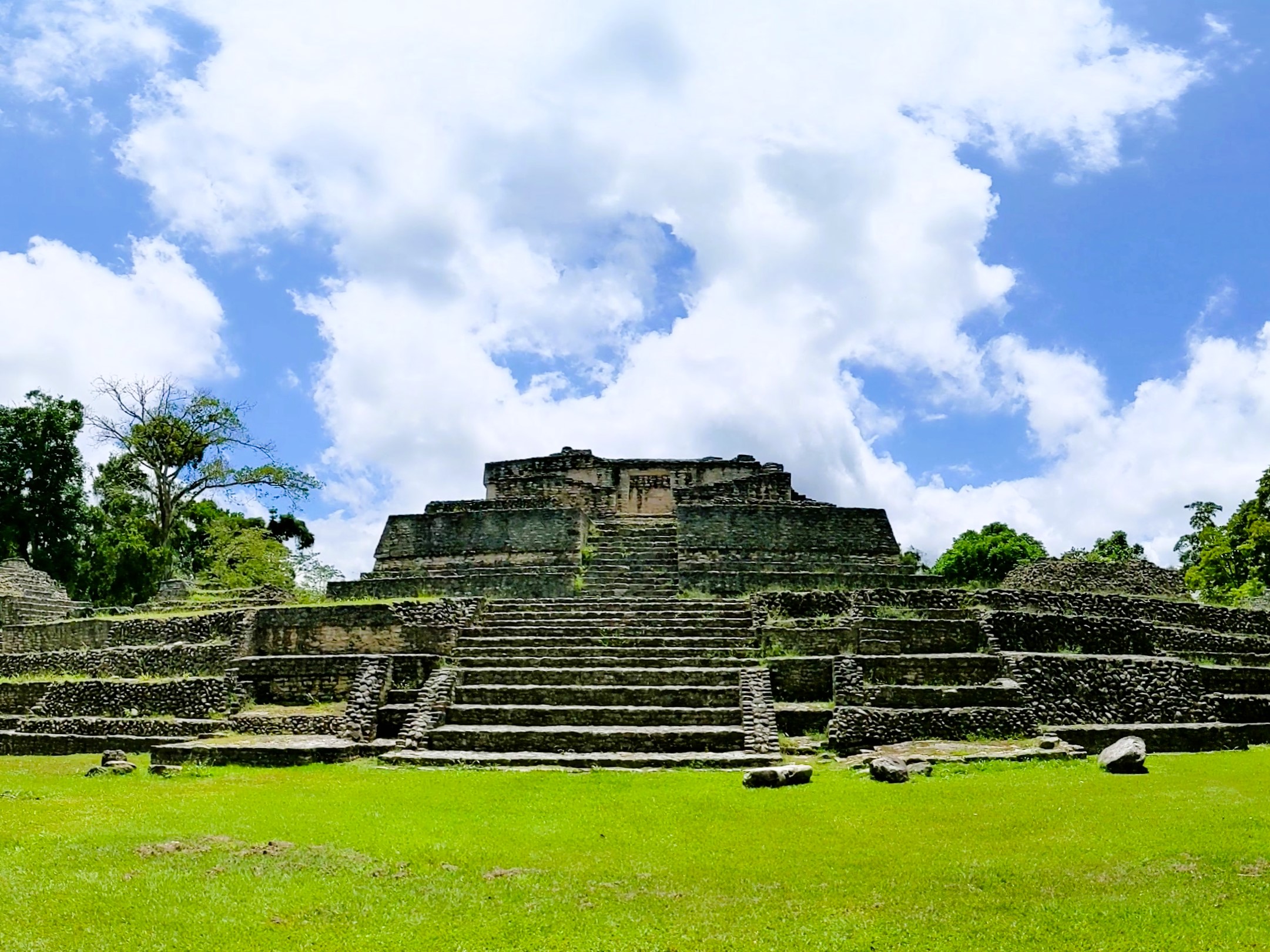
A Triumphant Ancient Mayan City
Caracol is a vast and unique city in Mayan history. With numerous stone drawings on temples and tablets within the city depicting their defeat of the powerful nearby kingdom of Tikal (present-day Guatemala), Caracol became the ruling center for the region, and a major change of ruling culture for Mayans in the 6th century AD.
In addition to being known for their knowledge of astronomy, or what they might call their belief in the study and guidance from the heavens above, the Mayans built many grand structures at Caracol. One of those structures is Canaa (sky palace), which is still the tallest building in Belize. An elaborate observatory that towers high into the sky in the back of the complex, ironically it is now used by Belizean guards to keep watch on Guatemalan guerrillas causing issues from the border nearby.

A Controversial Path
It is not easy to get to Caracol. Well, at least when we last visited it in August of 2021. Located in the Cayo district in Belize, and geographically close to Belize’s second-largest city San Ignacio, the ruins of this once-great Mayan city have only been partially excavated, and work progresses slowly. Part of that is due to scarce resources, and part of it is the enormity of structures that still need to be uncovered. But another obstacle is the trek to and from Caracol. The road we traversed took over two and a half hours on some very rough terrain.
This was also towards the end of the COVID restrictions, so the amount of tours and trucks making the trek were still few and far between. Multiple times we had to get out and move huge branches or brush, and many of the bridges looked like they were in serious need of some maintenance. But along with the crazy terrain, we noticed a lot of construction going on as well. In various parts of the road where we were traveling, it was being widened, and where old bridges lay, new bridges were in the process of being built. Except these were really large bridges being built, to match the new very wide road that was going in. As our Belizean guide told us with a disdainful tone, the new expansive roads and bridges would soon be occupied by huge diesel buses carting cruise ship passengers on day trips to Caracol, taking a third of the time to get up the mountain. He added that we should feel lucky that we’re seeing it like it is now, to be in the park and experience it with few people. He added it was probably going to look very different once the road is built.
The cruise ship comments were a constant theme we heard when we visited a few years back. Talking to expats we met who have been in Belize for decades, cruise ships are always a point of contention, especially with the ecosystem of the second-largest reef in the world—but they agreed that it was even more of a heated topic for debate with all the changes that were taking place. Demolition of a path through the jungle to get to Caracol was just one of many things that were happening to aggressively cater to cruise ship tourism at the time. Not surprisingly, most local Belizeans and expats who lived in the country we talked to were not happy about it.

Opportunity Awaits
As amazing as Caracol was, and it was truly breathtaking, equally mind-blowing was the amount of ancient structures, tombs, arenas, and other thousands-of-year-old buildings that lie under bodies of dirt and grass with full-blown trees growing out of them. Some are partially excavated, as you can see in the picture, but many are completely buried, deep below centuries of soil, plants, roots, and trees.
The parts of Caracol they have uncovered include numerous altars, the previously mentioned observatory, multiple courts with stands for the games they completed in, open communal areas, tombs, and more. Literally thousands of structures—and they suspect there are thousands more to be discovered and unearthed over the approximately 75 square miles that Caracol covers.


